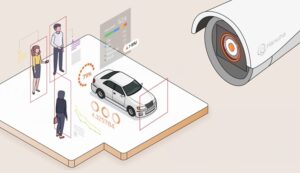
With more than 30 years of experience working across business development, sales, product and marketing for leading distribution and manufacturing companies, John Lutz Boorman, the recently appointed Head of Product and Marketing at Hanwha Vision Europe, has vast knowledge and expertise in the security industry. Here he talks about his view on innovations in video surveillance over the next few years.
The video surveillance market has rapidly evolved over the past few decades. Video cameras are no longer deployed solely to record images for security, but have become essential tools for organisations to refine operations, increase productivity, provide business intelligence and enhance safety. AI offers accurate detection of faces, people and vehicles (as well as their attributes) to reduce false alarms and deliver deeper operational insights.
In the opinion of John Lutz Boorman, over the next five years, AI will be increasingly deployed not only for “after the event” – but also to allow forensic search and analysis of hours of video in mere seconds. “Using AI, video systems trained on real-world scenarios defined by users will be able to predict behaviour and alert operators to the potential for incidents even before they happen. Predictive AI-enabled video technology will, therefore, be called on to support business forecasting efforts, deploy corporate resources more effectively, and help users make better-informed decisions.”
When asked about why the industry is so interested in AI ‘at the edge’, Lutz Boorman puts forward a compelling argument. “Putting AI to work used to involve vast amounts of computing power and infrastructure, which required a significant investment in energy and IT resources.
By including AI in the camera itself – or “at the edge” – significant efficiencies are now possible. Analysis of images using AI at the edge removes the need to stream raw data back to a server for analysis, freeing up bandwidth and reducing processing demands on centralised systems, as well as lowering data costs.”
He continues, “Cameras using AI at the edge can make a video installation more flexible and easy to scale. This is particularly helpful for organisations that wish to scale a project in phases, as cameras can be added as and when required without the need to invest in additional server capacity. Furthermore, edge devices can be utilised for more bespoke end-user applications to meet the needs of varying customer requirements.”
Lutz Boorman further adds, “There are cyber security benefits, too, with AI at the edge. As video analytics occurs on the device, only metadata is sent across the network – no sensitive data is transmitted for hackers to intercept. Additionally, running AI on a device can vastly improve the accuracy of event triggers and reduce false alarms. People counting, occupancy monitoring, queue management, and more can all be carried out with a high degree of accuracy thanks to edge AI utilising deep-learning technology.”
“Because AI offers such significant benefits, Hanwha Vision has led the adoption of AI at the edge for a number of years, having developed chipsets with improved processing power to allow data to be recorded and stored via SD card slots on its cameras. Edge-based AI also helps to ensure the widest possible adoption of this transformative technology, and for that reason, it should also be welcomed,” he concludes.











